 When heavy-muscled storm clouds envelop the blue skies, and rain falls in foggy mists and sweeping showers for several days running, it is a chance to pause in the continual summer chores of the garden and assess how it is getting on. Among the various categories of plants that make up the perennial occupants of the garden, the shrubs flanking its boundaries and softening the front aspect of the house annually bring to the garden more density, height, color and scent. There are seven types of shrub, of the 15 or so I've planted in my garden, that can be wholeheartedly recommended for northwestern Michigan gardens.
When heavy-muscled storm clouds envelop the blue skies, and rain falls in foggy mists and sweeping showers for several days running, it is a chance to pause in the continual summer chores of the garden and assess how it is getting on. Among the various categories of plants that make up the perennial occupants of the garden, the shrubs flanking its boundaries and softening the front aspect of the house annually bring to the garden more density, height, color and scent. There are seven types of shrub, of the 15 or so I've planted in my garden, that can be wholeheartedly recommended for northwestern Michigan gardens. Common farmyard lilacs in lavender, pink or white are a low-maintenance, fast-growing choice that never fail to please with their May offerings of wonderfully scented flowers. Lilac hedgerows naturalized into the wild grow all over the fields, country cemeteries, roadsides and former farm homesteads in this region, testifying to their adaptability and suitability for the hefty seasons and weathers. When in bloom, their scent pervades the air for miles through countryside and village. Picking the fragrant flowers for bouquets actually encourages lilacs to develop more flower buds for the following year. In the private garden, the flowers and the healthy forest-green foliage that stays intact late into fall give much benefit with very little care.
Forsythia likewise is exceptionally hardy, shoots rapidly upward once rooted in a sunny spot, and literally covers itself from stem to stern in merry, early springtime, sunshine-yellow flowers. The flower fragrance is clean, light and fresh, smells like springtime itself. The branches can be cut while in bud and forced into bloom indoors, long before anything else in the garden is display-ready. With regularly freshened water, the flowering branches will hold up well for a couple of weeks. If forsythia is pruned for shape and to remove dead or crossing branches after the flowers finish in spring, it redoubles its growth and flowering the next year.
Three types of shrub in the garden share the crown for being absolutely no-fuss, no-muss standout performers. Unlike hollies, bayberry, butterfly bush and elderberry which all have late-arriving, short-lived, summertime-only leafage, these three leaf out in early spring and stay foliage-full and beautiful throughout autumn. Unlike the slowpoke shasta and onondaga viburnums, they grow very rapidly, gaining a couple of feet in height and width each year. They all have lovely flowers and gentle scents. The three queens are the diablo ninebark, with rich burgundy leaves and clusters of seashell-pink flowers; the American high bush cranberry, with beautiful green foliage tipped by dark red that turns to flame-red in the fall, and cherry-red berries much loved by the birds; and the snowmound spirea, with some of the thickest, dark green foliage found anywhere in the shrub world, and cascades of sweet-smelling, late May, snowdrift-white blossoms.
The Chicago lustre viburnum, contrary to its dwarfish, hip-spreading cousins in the viburnum family, is an upright, handsome fellow who branches tall and fan-like. It always appears extremely well-groomed, with or without pruning, due to an unusually orderly, straight up, no-nonsense growth pattern, symmetrically veined and clamshell-shaped, precisely defined leaves, and very tight, neat little bundles of flowers in antique ivory. Not showy or flamboyant, it is straightforward, reliable and sturdy. It finishes off its annual strapping-fellow season with clusters of indigo berries.
Lastly let us sing the praises of the flowering quince. The tapered oval, grass-green leaves grow thick and glossy from first of May – no barren, spindly grey branches here to despoil the verdant spring landscape. The quince grows upward and outward in profligate ardor, very rapidly offering the deep thicket of branches that birds adore for nesting. It's got that unbeatable, hardy shrub resilience which, after the first year, releases the gardener from care and responsibility and does just superbly, thank you, all on its own stock. Best of all, it puts on a perfectly dazzling, citrus-honey scented princess gown of apricot flowers (or cream or cotton-candy pink, depending on variety), in late May, from head to toe. The wealth of bright and frilly flowers are a show-stopper, a fireworks explosion of color joyfully ushering in a new summer.
The landscaper Vanessa Kuemmerle, of Emeryville California, said, “A garden is like having an art museum outdoors, with constantly rotating exhibits and a living palette.” Shrubs raise the backbone and square the shoulders of the garden paintings. They contribute a feast of color to the scene, and strength and longevity in a setting where much else is all too transient and fly-by-night.
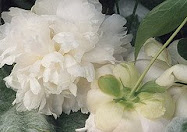


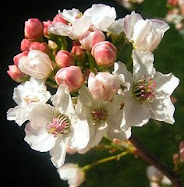
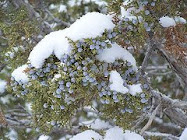

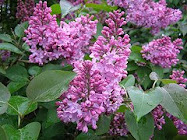
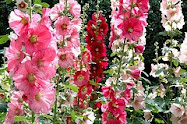
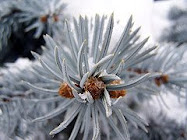
No comments:
Post a Comment